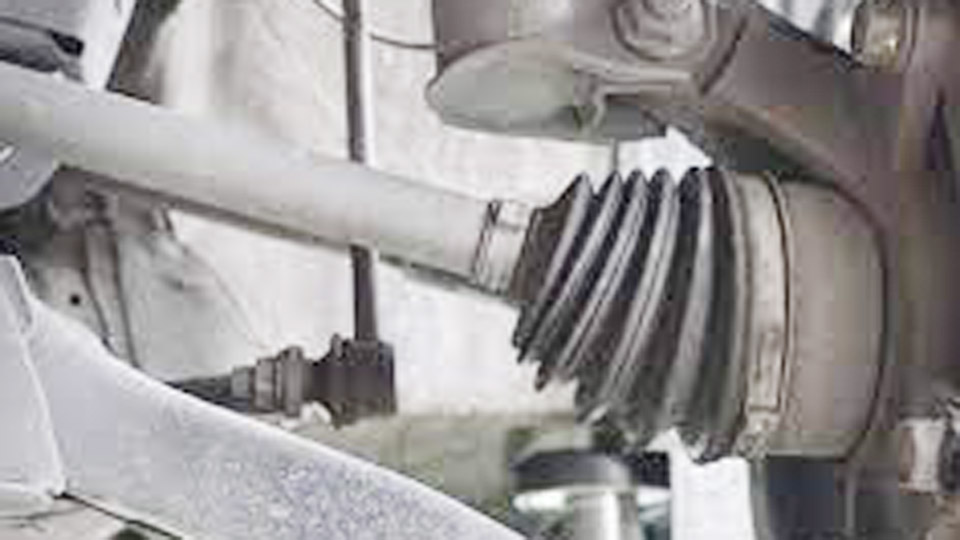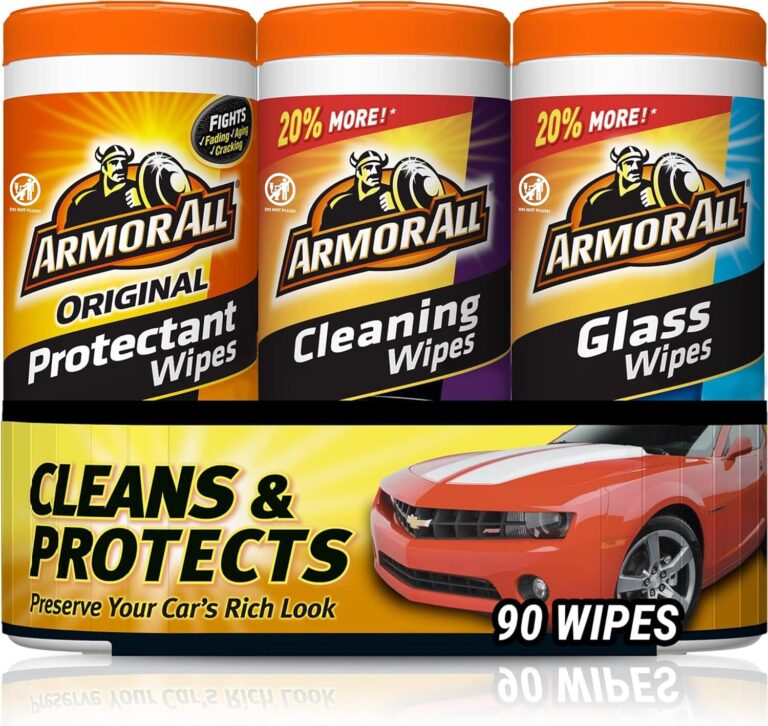Can a Bad CV Axle Cause Vibration?
You’re cruising down the highway, enjoying the open road, when your car starts to shake. It’s not just a little tremor—it’s a vibration that rattles your steering wheel and makes you nervous. That’s exactly what happened to me in my 2005 Chevy Silverado a few years ago. At first, I thought it was a tire issue, but after checking everything, I found the real problem: a worn-out CV axle.
A bad CV axle can definitely cause vibration, and it’s a common issue in front-wheel-drive and all-wheel-drive cars. I’ve fixed CV axles on my truck and a friend’s Honda Civic, and I’m here to share what I’ve learned about why this happens, how to spot it, and what to do next. If you’re a DIYer or just trying to understand your car, this guide will help you tackle that pesky vibration.

Image by carparts
What Is a CV Axle and How Does It Work?
A CV axle, or constant velocity axle, is a key part of your car’s drivetrain. It transfers power from the transmission to the wheels, letting them turn and move the car forward. In front-wheel-drive and all-wheel-drive vehicles, CV axles are especially important because they also allow the wheels to steer and handle suspension movement.
Each CV axle has two CV joints—one near the transmission (inner joint) and one near the wheel (outer joint). These joints are packed with grease and covered by rubber boots to keep dirt out. The joints flex and rotate, giving your wheels the freedom to move up and down or turn left and right.
I remember popping the hood on my Chevy and seeing the CV axles running from the transmission to the front wheels, looking like sturdy metal shafts with rubber boots at each end.
When a CV axle or its joints wear out, it can’t transfer power smoothly, and that’s when vibrations start. I learned this the hard way when my truck’s outer CV joint started failing, causing a shake I could feel in my seat.
Can a Bad CV Axle Cause Vibration?
Yes, absolutely. A bad CV axle is one of the most common causes of vibration in front-wheel-drive and all-wheel-drive cars. When I first felt my Chevy shake, I didn’t suspect the CV axle until I ruled out other issues. The vibration happens because a damaged CV joint or axle can’t rotate evenly. Here’s why:
- Worn CV Joints: The bearings inside the CV joint wear out, causing it to wobble instead of spin smoothly. This was the issue with my truck’s outer joint.
- Torn Boots: If the rubber boot tears, grease leaks out, and dirt gets in, damaging the joint. I’ve seen this on cars left outside in harsh weather.
- Bent Axle: A hard hit, like from a pothole, can bend the axle, making it vibrate. A friend’s Civic had this after a curb scrape.
- Loose Components: If the axle or joint is loose, it can shake under load. I found a loose inner joint on a buddy’s Toyota.
The vibration can feel different depending on the problem. In my Chevy, it was a steady shake at 50–60 mph. Other times, it’s a shudder when accelerating or turning. If you feel a vibration, a bad CV axle is a prime suspect.
Symptoms of a Bad CV Axle
I’ve learned to spot a bad CV axle by paying attention to the car’s behavior. Here are the signs I look for, based on my experience:
- Vibration While Driving: A steady shake, especially at highway speeds, is a big clue. My Chevy vibrated between 50–70 mph, worse when accelerating.
- Clicking or Popping When Turning: Worn outer CV joints often click when you turn sharply, like in a parking lot. I heard this in my friend’s Civic.
- Clunking During Acceleration: A bad inner joint can clunk when you hit the gas. This happened in my Chevy before the vibration got bad.
- Grease on the Wheel or Undercarriage: A torn boot leaks grease, leaving splatters near the wheel. I spotted this under my truck before diagnosing the axle.
- Wobbling Steering Wheel: Severe CV joint damage can make the steering wheel shake. I felt this slightly in my Chevy at high speeds.
- Uneven Tire Wear: A bad axle can misalign the wheel, causing odd tire wear. I check my tires monthly to catch this early.
If you notice these signs, don’t ignore them. A bad CV axle can damage other parts, like the transmission, if left unchecked.
How to Diagnose a Bad CV Axle
When my truck started vibrating, I didn’t jump straight to replacing the CV axle. I checked other possibilities first. Here’s how I diagnose a bad CV axle, based on my garage experiments:
Visual Inspection: Jack up the car, secure it with jack stands, and look at the CV axles. Check for torn boots, grease leaks, or bent shafts. I found a ripped boot on my Chevy’s outer joint.
Listen for Noises: Turn the steering wheel fully left or right and drive in a circle. Clicking means a bad outer joint. I did this in a parking lot with my friend’s Civic.
Feel for Vibration: Drive at different speeds and note when the vibration happens. My Chevy shook worst at 60 mph, pointing to the CV axle.
Check for Play: Grab the axle and wiggle it. If it’s loose, the joint or connection is worn. I felt play in my truck’s outer joint.
Rule Out Other Causes: Vibrations can come from tires, brakes, or wheel bearings. I balanced my tires and checked rotors before blaming the axle.
If you’re not sure, take it to a mechanic. I’ve used a shop to confirm my diagnosis when I didn’t have time to dig deeper.
Other Causes of Vibration
Before you replace a CV axle, make sure it’s the problem. I’ve chased vibrations that turned out to be something else. Here are other culprits I’ve encountered:
- Unbalanced Tires: Out-of-balance tires shake at certain speeds. I had this on my wife’s SUV and fixed it with a $20 balance.
- Worn Wheel Bearings: Bad bearings cause a humming or grinding vibration. I replaced one on my Chevy’s rear wheel once.
- Bent Wheels: A bent rim vibrates, especially at high speeds. I checked my rims with a straightedge after hitting a pothole.
- Brake Issues: Warped rotors can shake when braking. I felt this on a friend’s Ford and resurfaced the rotors.
- Driveshaft Problems: In rear-wheel-drive cars, a bad driveshaft can vibrate. I ruled this out on my Chevy since it’s front-wheel drive.
If you’ve checked these and still feel a shake, the CV axle is likely the issue. I always start with a quick tire and brake check to save time.
How to Fix a Bad CV Axle
Fixing a bad CV axle usually means replacing it. I’ve done this on my Chevy and helped a friend with his Civic. Here’s how I do it, step by step:
Gather Tools: You’ll need a jack, jack stands, socket wrench (32mm for axle nut), breaker bar, pry bar, hammer, torque wrench, and a new CV axle ($50–$150). I got a $70 axle for my Chevy online.
Lift the Car: Loosen the lug nuts and axle nut, jack up the car, and secure it with stands. Remove the wheel. I always double-check the stands for safety.
Remove the Axle Nut: Use a breaker bar to remove the axle nut. Mine was stuck, so I sprayed WD-40 and let it sit for 10 minutes.
Disconnect the Axle: Remove the lower ball joint or control arm to free the axle (check your car’s manual). I unbolted the ball joint on my Chevy. Push the axle out of the hub with a pry bar or hammer tap.
Remove the Axle from the Transmission: Pry the inner joint out of the transmission. I used a pry bar and caught the fluid in a pan. Be ready for a little transmission fluid to leak.
Install the New Axle: Insert the new axle into the transmission until it clicks. Slide the outer end into the hub. I wiggled it gently to seat it properly.
Reassemble: Reconnect the ball joint or control arm, bolt everything back, and torque the axle nut (usually 150–200 ft-lbs). I torqued my Chevy’s to 170 ft-lbs.
Mount the Wheel: Put the wheel on, hand-tighten lug nuts, lower the car, and torque lug nuts (80–100 ft-lbs). I use a star pattern for even tightening.
Check Fluid: Top off transmission fluid if it leaked. I added a half-quart to my Chevy after the swap.
Test Drive: Drive slowly to check for vibrations or noises. I took my truck around the block and retightened everything after 50 miles.
This job took me 2 hours the first time, less now that I’ve done it a few times. If you’re new, give yourself 3–4 hours and watch a video for your car model.
Costs of Replacing a CV Axle
Replacing a CV axle is affordable if you do it yourself. Here’s a table of typical costs based on my experience:
| Item | Estimated Cost (USD) |
|---|---|
| CV Axle (per axle) | $50–$150 |
| Transmission Fluid | $5–$15 |
| Tools (if needed) | $20–$100 (socket set, torque wrench) |
| Mechanic Labor (if needed) | $200–$500 |
I spent $80 on a CV axle and $10 on fluid for my Chevy, doing it myself. A shop quoted me $400, so DIY saved me a bundle. Costs vary by car—luxury models like Audis are pricier.
Tips for a Successful CV Axle Replacement
Here’s what I’ve learned to make the job easier:
- Buy Quality Axles: Cheap axles fail fast. I stick with Dorman or OEM for reliability.
- Work Clean: Catch leaking fluid in a pan to avoid a mess. I learned this after staining my driveway.
- Torque Properly: Use a torque wrench for the axle nut and lug nuts to avoid damage. I check my manual for specs.
- Take Pictures: Snap photos before disassembling to remember how parts go back. This saved me on my Civic repair.
- Check Both Sides: If one axle is bad, the other might be close behind. I inspect both when working on one.
Preventing CV Axle Problems
I’ve found ways to keep CV axles from failing:
- Inspect Boots: Check CV boots every oil change for tears. I caught a small tear early and replaced the boot for $20.
- Avoid Potholes: Hard impacts can bend axles or damage joints. I drive carefully on rough roads.
- Lubricate Joints: If you replace a boot, repack the joint with CV grease. I did this on my Chevy to extend the axle’s life.
- Check Alignment: Misaligned wheels stress axles. I get an alignment yearly to prevent issues.
- Drive Gently: Aggressive driving wears joints faster. I ease off the gas when turning tightly.
These habits have kept my truck’s axles solid since the repair.
When to Call a Professional
I love DIY, but some CV axle jobs are tough. If you see these, consider a mechanic:
- Seized Axle: If the axle won’t come out of the transmission or hub, a pro has better tools. I sent a friend’s Ford to a shop for this.
- Complex Suspension: Some cars need special tools to disconnect the suspension. A mechanic can handle it faster.
- No Tools or Time: If you lack a torque wrench or jack stands, a shop is safer. Expect to pay $200–$500.
- Multiple Issues: If the vibration persists after replacing the axle, a pro can diagnose deeper problems. I’ve done this when stumped.
I’ve done most of my axle swaps myself, but I’ve used a shop when I was short on time.
My Experience with CV Axle Vibrations
When my Chevy started vibrating at 60 mph, I thought it was a tire balance issue. I balanced the tires, checked the brakes, and still felt the shake. Then I noticed grease under the wheel and a clicking sound when turning. A quick inspection showed a torn CV boot and a worn outer joint. I replaced the axle for $90 and a few hours of work, and the vibration vanished.
I’ve helped friends fix similar issues, each time feeling like a hero when the car runs smoothly again. It’s a satisfying repair that saves money and keeps your ride safe.
Why Fixing a Bad CV Axle Matters
A bad CV axle isn’t just about vibrations—it’s a safety issue. If the axle fails completely, you could lose power to the wheels, leaving you stranded or worse. I worried about this when my Chevy shook on the highway, especially with my family in the car. Fixing it restores your car’s performance, safety, and value. A vibrating car is a red flag for mechanics or buyers, so it’s worth the effort to fix.
Conclusion
A bad CV axle can definitely cause vibration, shaking your car and your confidence on the road. From my own garage battles, I’ve learned that a worn joint, torn boot, or bent axle is often the culprit, and replacing it is a job you can tackle with some tools and grit. Whether it’s the clicking when you turn or a shudder at speed, catching it early saves you from bigger problems. Grab a wrench, jack up your car, and swap that axle—you’ll save money and feel like a pro when the ride is smooth again. Keep your wheels spinning and your road trips worry-free with a little know-how and elbow grease.
Frequently Asked Questions
Can a bad CV axle cause vibration?
Yes. A worn CV joint, torn boot, or bent axle can cause vibrations, especially at highway speeds or when turning.
How do I know if my CV axle is bad?
Look for vibrations, clicking when turning, clunking during acceleration, grease leaks, or a wobbling steering wheel.
Can I drive with a bad CV axle?
It’s risky. A bad axle can fail completely, leaving you stranded. Fix it as soon as possible.
How much does it cost to replace a CV axle?
DIY costs $50–$150 for parts. A mechanic charges $200–$500, including labor.
How long does it take to replace a CV axle?
It takes 2–4 hours for a DIY job, less for a pro. I did my Chevy in about 2 hours.
Can a bad CV axle damage my car?
Yes. It can strain the transmission or cause wheel damage if it fails. I fixed mine early to avoid this.
How often should I check my CV axles?
Inspect CV boots every oil change (5,000–7,000 miles) for tears or leaks to catch issues early.

David Peterson, the chief editor of sparepartscare. I am an automobile engineer and assign to an local firm with much experience in automobile equipment. During the time, most of my experience is related to the Industry of cars parts. I learned about the thing, when working with experienced inspectors, one must be as good as the inspector, or better, with knowledge of the project as well as the practical aspects of automobile industry.











